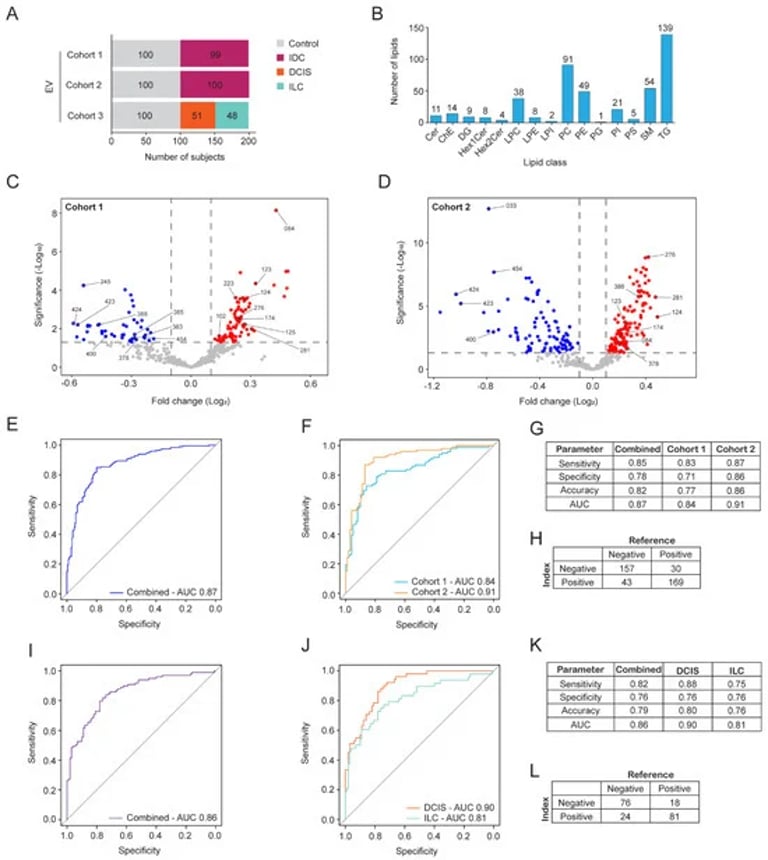Breakthrough Blood Test Shows 86.1% Accuracy in Early Breast Cancer Detection Using Lipid Biomarkers
October 28, 2024
Employing advanced liquid chromatography with high-resolution and tandem mass spectrometry, researchers identified a 20-lipid panel that achieved an impressive area under the curve (AUC) of 0.95, with a sensitivity of 0.91 and specificity of 0.79.
In response to the limitations of traditional mammography, a study is focused on developing a sensitive blood test for early breast cancer detection.
The study successfully identified 23 lipids in extracellular vesicles (EVs) that effectively distinguished breast cancer patients from healthy controls, yielding an overall accuracy of 0.82 and sensitivity of 0.85.
Understanding variability in plasma protein levels due to factors like sex, age, and ethnicity is crucial for accurate disease diagnosis.
Breast cancer remains a critical global health issue, with 2.3 million new cases and 685,000 deaths reported in 2020, underscoring the urgent need for improved early detection methods.
A multivariate plasma-derived lipid biomarker signature was developed from 598 blood samples, successfully differentiating healthy individuals from breast cancer patients.
Extracellular vesicles found in blood are rich in tumor-specific analytes, making them valuable for diagnostic purposes.
The methodology demonstrated high accuracy and reproducibility, positioning it well for future clinical applications in biomarker validation.
Comparative analysis between European and North American cohorts revealed significant differences in 42 proteins, suggesting varying physiological pathways in disease development.
Machine learning techniques were utilized to enhance the predictive accuracy of lipid signatures, with an ensemble model demonstrating superior performance metrics compared to simpler models.
The study emphasizes the potential of specific proteins as key indicators for diseases such as cancer, diabetes, and Alzheimer's, advocating for region-specific diagnostic panels.
The ensemble model achieved a stable accuracy of 86.1% and high sensitivity in detecting breast cancer, indicating significant potential for clinical application.
Summary based on 2 sources
